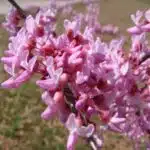The Eastern Cottonwood, also known as Populus deltoides, is a native tree species in North America that grows up to 100 feet tall. It is commonly found near streams and rivers due to its ability to thrive in moist environments. The Eastern Cottonwood has a unique characteristic of having large, triangular leaves that rustle loudly in the wind, creating a distinct sound that has been described as resembling rain.
Growing and caring for the Eastern Cottonwood requires attention to detail and proper maintenance techniques. This article aims to provide readers with comprehensive information on how to successfully cultivate and care for this beautiful tree species. From planting to pruning, this guide will cover all aspects of growing an Eastern Cottonwood, including helpful tips and tricks for ensuring that your tree thrives for years to come. Whether you’re a seasoned gardener or just starting out, this article will serve as an invaluable resource for anyone looking to add an Eastern Cottonwood to their landscape.
Understanding The Eastern Cottonwood’s Native Habitat
The Eastern Cottonwood is a large and majestic tree that can grow up to 100 feet tall. It is commonly found in the eastern and central regions of North America, thriving in moist soils near streams, rivers, and wetlands. The tree’s native habitat plays a significant role in its growth and development, making it essential to understand the ecological benefits it provides.
One of the most notable ecological benefits of the Eastern Cottonwood is its ability to stabilize riverbanks and prevent soil erosion. The tree’s extensive root system holds soil in place while also filtering pollutants from water sources. Additionally, the cotton-like seeds produced by female trees provide food for wildlife such as birds and squirrels.
Climate considerations are also crucial when growing an Eastern Cottonwood. This species thrives in warm climates with plenty of sunlight, which promotes healthy growth and strong root systems. Although tolerant of flooding, these trees cannot survive prolonged droughts or extreme heat without proper care and maintenance.
Choosing the right location for planting an Eastern Cottonwood is essential for ensuring optimal growth and survival. In the following section, we will discuss crucial factors to consider when selecting a site for planting this magnificent tree.
Choosing The Right Location For Planting
Understanding the Eastern Cottonwood’s native habitat is crucial in choosing the right location for planting. This tree species thrives in areas with ample sunlight and moist, well-drained soil. Native to North America, they can grow up to 100 feet tall and have a spread of 50 feet. They are commonly found near streams, rivers, and other bodies of water.
Sun exposure plays a significant role in the growth and development of Eastern Cottonwoods. These trees require full sun to thrive, making it essential to choose a location that receives at least six hours of direct sunlight daily. They do not tolerate shade or partial shade well and may struggle to grow if planted in areas that do not receive adequate sunlight.
Soil pH is also an important factor to consider when choosing a location for planting Eastern Cottonwoods. These trees prefer neutral to slightly acidic soil with a pH range between 6.0-7.5. It is recommended to test the soil before planting by sending samples to a local extension office or using a home testing kit. If the soil pH is too high or too low, amending the soil with appropriate materials such as sulfur or lime will be necessary.
When preparing the soil for optimal growth, several steps need to be taken into account. First, remove any weeds or debris from the area where you plan on planting your Eastern Cottonwood tree. Then loosen and cultivate the topsoil using a tiller or garden fork to create an optimal environment for root development. Mixing compost into the soil can provide added nutrients that help support healthy growth over time. Finally, water thoroughly after planting and maintain consistent moisture levels throughout the growing season for best results.
Preparing The Soil For Optimal Growth
Testing and preparing the soil is essential to ensuring optimal growth for your eastern cottonwood. Before planting, it’s important to test the soil to determine its pH level. Eastern cottonwoods prefer a slightly acidic soil with a pH range of 6.0 to 7.5. If your soil falls outside of this range, it’s important to adjust the pH level accordingly.
To test your soil, take a sample from several areas where you plan on planting your eastern cottonwood trees. Mix these samples together and send them to a lab for analysis. Once you receive the results, you can adjust the pH level by adding either lime or sulfur depending on whether your soil is too acidic or alkaline.
It’s also important to make sure the soil is well-draining and aerated before planting your eastern cottonwood trees. This can be achieved by mixing organic matter such as compost or aged manure into the soil, which will improve both drainage and aeration. By taking these steps, you’ll ensure that your eastern cottonwood trees have everything they need to thrive in their new environment.
With the proper testing and preparation of the soil completed, it’s time to move onto selecting and planting your eastern cottonwood trees.
Selecting And Planting Your Eastern Cottonwood
As you prepare to plant your eastern cottonwood, consider the best time to do so. It is recommended to plant in late fall or early spring when the ground is moist and temperatures are cool. This allows the tree to establish its roots before summer heat arrives. Additionally, choose a location with plenty of sunlight and space for the tree’s mature size.
When selecting your eastern cottonwood, it’s important to consider tree size for optimal growth. Choose a young tree that is at least 4 feet tall with a sturdy trunk and healthy leaves. The root system should be well-developed with no signs of damage or disease. Keep in mind that eastern cottonwoods can grow up to 100 feet tall and have a spread of 50 feet, so make sure there is enough room for it to thrive.
Proper planting techniques are essential for the health of your eastern cottonwood. Dig a hole twice as wide as the root ball and deep enough so that the top of the root ball is level with the soil surface. Backfill with soil and water thoroughly to settle the soil around the roots. Mulch around the base of the tree, but keep it away from touching the trunk to prevent rotting. With proper planting and care, your eastern cottonwood will flourish into a beautiful addition to your landscape.
As you have successfully planted your eastern cottonwood, it’s important to learn how to take care of it properly by watering and fertilizing it regularly.
Watering And Fertilizing Your Tree
After selecting and planting your eastern cottonwood, it is important to ensure that it receives adequate water and nutrients to thrive. During the first year of growth, it is particularly important to provide regular watering to establish strong root systems. During hot summer months, when rainfall may be scarce, additional irrigation may be necessary. Be sure to water deeply and infrequently rather than frequently with shallow watering.
To promote healthy growth and development in your eastern cottonwood, consider using organic fertilizers. These fertilizers release nutrients slowly over time, providing sustained nourishment for your tree without causing excessive growth spurts that could weaken the wood or cause structural problems. Organic fertilizers also help to improve soil quality, which can benefit other plants in your landscape as well.
Summer irrigation and organic fertilizers are two key components of a successful maintenance plan for an eastern cottonwood tree. By providing consistent moisture and nourishment throughout the growing season, you can help ensure that your tree remains healthy and vibrant for many years to come. In the next section, we will discuss strategies for protecting your tree from pests and diseases, which can threaten its growth and longevity if left unchecked.
Protecting Your Tree From Pests And Diseases
Preventive measures are the best way to protect your eastern cottonwood tree from pests and diseases. One such measure is to ensure that the tree is healthy and well-maintained. This can be achieved by providing adequate nutrition, watering, and pruning on a regular basis. Additionally, it is important to keep the area around the tree clean and free of debris as this can attract pests.
Natural remedies are also effective in preventing diseases and pests from infesting your cottonwood tree. For instance, you can use neem oil or garlic spray to repel insects. You can also make a solution of baking soda and water to prevent fungal infections. These remedies are safe for both your tree and the environment.
By taking these preventive measures, you can greatly reduce the likelihood of pests and diseases affecting your eastern cottonwood tree. However, if you do notice any signs of infestation or disease, it is important to take action immediately. In some cases, natural remedies may not be enough, and you may need to seek professional help. In the next section, we will discuss how pruning can help maintain the health of your eastern cottonwood tree.
Transitioning into the next section about ‘pruning your eastern cottonwood’, proper pruning techniques play a crucial role in maintaining optimal health for your tree.
Pruning Your Eastern Cottonwood
As much as trees are a natural source of beauty and purify the air, they are also prone to pests and diseases. Protecting your eastern cottonwood tree from these adversities is crucial for its growth and longevity. However, the journey does not end there. Pruning your tree is equally important in maintaining its health and shape.
Pruning techniques for an eastern cottonwood vary depending on what you aim to achieve. If you want to promote growth, then pruning during early spring is recommended. On the other hand, if you want to limit growth or reduce the size of the tree, then pruning should be carried out in late fall when it’s dormant. It’s worth noting that this species tends to grow tall with weak branches; therefore, it’s advisable to remove any dead branches or those growing towards the center of the tree.
Proper timing of pruning is vital in maintaining tree health. For instance, if you prune your eastern cottonwood during summer or late spring, it will be more susceptible to diseases such as canker. Winter pruning may also lead to frost damage since it takes time for wounds to heal before new growth starts. Moreover, avoid heavy pruning unless it’s necessary since this species tends to have limited wound closure capacity.
Managing your eastern cottonwood’s health and growth does not stop at protecting it from pests and diseases or pruning. Other factors such as watering, fertilization and soil management play a significant role in ensuring its survival. Therefore, keep an eye on these aspects while focusing on pruning techniques and timing for optimal results in managing your eastern cottonwood tree’s health and growth.
Managing Tree Health And Growth
Watering Eastern cottonwood trees should be done on a regular basis, ensuring that the soil is sufficiently moist throughout the year.
Pruning Eastern cottonwood trees should be done in late winter or early spring, focusing on removing dead, diseased, and damaged branches.
Fertilizing Eastern cottonwood trees should be done in the spring with a balanced fertilizer to ensure proper growth and health.
When watering Eastern cottonwood trees, it is important to avoid over-watering, as this can lead to root rot and other diseases.
Pruning Eastern cottonwood trees should be done with caution, as the trees can be very sensitive to drastic pruning.
Fertilization of Eastern cottonwood trees should be done in moderation, as too much fertilizer can lead to excessive vegetative growth.
Watering
To ensure the healthy growth of your eastern cottonwood, it is important to pay close attention to its watering needs. Watering frequency plays a crucial role in maintaining the soil moisture levels necessary for optimal growth. For newly planted trees, it is recommended to water deeply and regularly during the first growing season. This means providing enough water to moisten the soil to a depth of 6-8 inches every 7-10 days.
As the tree matures, watering frequency can be reduced but should still be consistent during periods of drought or high temperatures. Check soil moisture levels regularly by inserting a probe or stick into the ground near the tree’s root zone. If the soil feels dry at a depth of 2-3 inches, it is time to water. It is important not to overwater as this can lead to root rot and other diseases. As a general rule, it is better to water deeply and infrequently than shallowly and frequently.
In addition to watering frequency, proper irrigation techniques are also important for managing tree health and growth. Consider using a soaker hose or drip irrigation system rather than overhead sprinklers which can waste water through evaporation and promote fungal diseases. By following these guidelines for watering your eastern cottonwood, you can ensure that it receives adequate moisture for healthy growth and development without risking damage from overwatering or improper irrigation methods.
Pruning
Pruning is another important aspect of managing the health and growth of your eastern cottonwood tree. Pruning techniques can be used to shape the tree, promote healthy growth, and remove damaged or diseased branches. Timing considerations are also important when it comes to pruning. It is best to prune during the dormant season in late winter or early spring before new growth begins.
When pruning, it is important to make clean cuts with sharp tools and to avoid removing too much foliage or branches at once. Over-pruning can stress the tree and lead to reduced growth and overall health. It is also important to consider the natural shape of the tree when pruning and to avoid removing too many branches from any one side which can cause an imbalance in growth.
Regular pruning can help maintain a healthy structure for your eastern cottonwood tree while reducing the risk of disease or damage from broken branches. By following proper pruning techniques and timing considerations, you can promote strong and healthy growth for your tree for years to come.
Fertilizing
Managing the health and growth of an eastern cottonwood tree requires various techniques, including pruning. However, proper fertilization is another essential aspect to consider. Fertilizing can provide the necessary nutrients for the tree to grow and maintain a healthy structure. There are organic options available for those who prefer to avoid synthetic chemicals in their gardening practices.
The frequency schedule for fertilizing an eastern cottonwood tree depends on several factors, such as soil type, age of the tree, and overall health. Generally, it is recommended to fertilize once or twice a year during periods of active growth in spring or early fall. It is also important to follow the manufacturer’s instructions when applying fertilizer and avoid over-applying, which can lead to root burn and other issues.
Organic options for fertilization include compost tea or aged manure, which can provide beneficial microorganisms and nutrients to the soil. These natural options can promote healthy root development and improve soil quality over time. Additionally, avoiding excessive use of synthetic fertilizers can prevent harmful runoff into nearby water sources. By incorporating proper fertilization techniques into your eastern cottonwood tree care routine, you can help ensure its longevity and vitality.
Harvesting And Utilizing Cottonwood Products
Eastern cottonwood trees are not only great for providing shade and oxygen, but they can also be a source of valuable wood products. Harvesting the wood is best done during the dormant season, from late fall to early spring. This is when the tree’s growth has slowed down and sap flow is minimal, making it easier to handle the wood. The harvested wood can be used for various purposes such as furniture, construction materials, paper pulp, and even firewood.
Craft ideas are also popular with cottonwood wood pieces. The light-colored wood with its smooth texture makes it ideal for carving or engraving designs onto it. Cottonwood bark is also sought after by artisans who use it to make baskets, carvings or other decorative items. It’s essential to note that harvesting cottonwoods has an environmental impact; therefore, it’s necessary to do so sustainably.
When utilizing cottonwood products, it’s crucial to consider the environmental impact of harvesting the trees. The benefits of using this versatile species should not outweigh its ecological significance in our ecosystems. Therefore, sustainable harvesting methods need to be employed when utilizing cottonwoods for various purposes. In addition, planting new trees can help replenish those that have been harvested and maintain their benefits into the future.
As useful as Eastern cottonwoods are in our society, several issues may arise when growing them. Troubleshooting common issues with eastern cottonwoods will help ensure their optimal growth and longevity in your garden or landscape management strategy.
Troubleshooting Common Issues With Eastern Cottonwoods
Eastern cottonwoods are known for their fast growth rate and adaptability to various environments. However, like any other plant, they are susceptible to diseases and pests that may affect their overall health. Here are some common issues that you may encounter while caring for your eastern cottonwood and how to address them.
Preventing rot One of the most common issues with eastern cottonwoods is rotting caused by fungi. Fungi can thrive in moist environments, especially during wet seasons or when the tree is located in damp soil. To prevent rot, make sure that your tree is planted in well-draining soil and avoid overwatering it. Additionally, prune any dead or diseased branches regularly as they can provide a breeding ground for fungi.
Managing leaf spot Leaf spot is another common issue that affects eastern cottonwoods. It is caused by fungal infections that manifest as small brown spots on the leaves. Although it does not directly harm the tree’s growth, it can weaken its overall health and make it more susceptible to other diseases and pests. To manage leaf spot, remove any infected leaves immediately and dispose of them properly to prevent the spread of the disease.
Pests Eastern cottonwoods attract a variety of pests such as aphids, caterpillars, borers, and scale insects. These pests suck sap from the tree or bore into its bark, causing damage to its structure and weakening its health over time. To prevent pest infestations, inspect your tree regularly for signs of damage or infestation and treat it with appropriate pesticides if necessary.
In conclusion, keeping an eastern cottonwood healthy requires proper care and attention to potential issues such as rotting, leaf spot infections, and pest infestations. By following these tips on preventing rotting and managing leaf spot infections while also taking steps to prevent pest infestations altogether through regular inspections of your tree, you can help ensure that your eastern cottonwood remains healthy and strong over time.
Conclusion
The Eastern Cottonwood is a magnificent tree that requires careful attention and maintenance to thrive. Understanding the native habitat, selecting the right location for planting, preparing the soil, watering and fertilizing the tree, pruning it regularly, managing its health and growth, harvesting cottonwood products and troubleshooting common issues are all crucial steps in growing and caring for this beautiful tree.
Proper care of an Eastern Cottonwood can result in a long-lasting source of shade, lumber or wood pulp. Remember to plant your tree in a location with plenty of sunlight and well-drained soil. Keep your tree hydrated by watering it consistently throughout the year. Fertilize it annually to maintain healthy growth. Regular pruning will help control its shape and size while promoting air circulation within the canopy. By following these guidelines and paying close attention to your Eastern Cottonwood’s needs, you will ensure that it thrives for years to come.
Image Credits
- “Eastern Cottonwoods” by oakridgelabnews (featured)





























